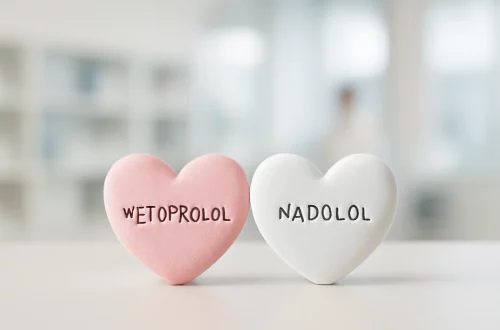
Exploring the Fascination with Huge Penis Pictures in Popular Culture
The fascination with large penis imagery has woven its way into the fabric of popular culture, becoming a topic that elicits both intrigue and amusement. This phenomenon encompasses various media, from art and film to social media and advertising, reflecting societal attitudes towards masculinity, sexuality, and body image. The allure of huge penis pictures can be traced back through history, often symbolizing virility and strength. In contemporary society, where visual content reigns supreme, these images can provoke a range of reactions—ranging from humor to insecurity.
In a world increasingly influenced by visual stimuli, the impact of such imagery is magnified. It raises questions about the societal standards of masculinity and how they shape individual perceptions of self-worth. As we navigate this complex landscape, it becomes essential to understand why these images resonate so deeply with audiences. Are they merely a form of entertainment, or do they reflect deeper cultural anxieties? In this exploration, we delve into the various dimensions of this phenomenon, seeking to uncover the layers that contribute to the ongoing fascination with oversized penis imagery in popular culture.
The Role of Humor in the Appeal of Large Penis Imagery
Humor plays a significant role in the allure of large penis pictures, often serving as a vehicle for social commentary. The use of exaggerated imagery can evoke laughter, breaking down barriers of discomfort associated with discussing male anatomy. Comedians and satirists frequently exploit this trope, using it to challenge social norms and provoke thought. By illustrating something that many consider taboo, they create a space where audiences can laugh at the absurdity of societal expectations surrounding masculinity.
Moreover, humor surrounding large penis images can foster a sense of camaraderie among viewers. This shared laughter can dissipate feelings of insecurity or inadequacy, allowing individuals to embrace their own bodies with a lighter heart. For many, the comedic portrayal of large penises becomes a way to confront deeply ingrained societal pressures regarding size and performance. This comedic approach can be seen in various forms of media, from television shows to internet memes, where the outrageousness of the imagery is celebrated rather than shamed.
However, while humor can be a powerful tool for addressing sensitive topics, it can also perpetuate unrealistic standards. The prevalence of large penis imagery in comedic contexts can lead to harmful stereotypes, reinforcing the idea that size is directly correlated with masculinity and worth. This raises important questions about the impact of such humor on self-esteem and body image, particularly among young men who are still navigating their identities.
Ultimately, the humor surrounding large penis pictures serves a dual purpose: it offers a means of societal critique while simultaneously highlighting the absurdity of rigid gender norms. As audiences engage with these images, they are invited to reflect on their own beliefs and experiences, potentially fostering a more nuanced understanding of masculinity.
Symbolism and Cultural Significance of Size
The symbolism of size in relation to masculinity has deep roots in various cultures, often representing power, dominance, and virility. Large penis imagery is frequently linked to these ideals, suggesting that size equates to greater sexual prowess and desirability. This association can be traced back to ancient civilizations, where depictions of exaggerated male genitalia were common in art and mythology, often signifying fertility and strength.
In modern culture, this symbolism persists, influencing everything from advertising to film. Brands often utilize large penis imagery to convey messages of virility and masculinity, appealing to societal desires for power and confidence. This marketing strategy capitalizes on the notion that a larger size is synonymous with enhanced performance, which can lead to a cycle where consumers feel compelled to conform to these ideals.
However, this emphasis on size can have detrimental effects on individuals’ self-perception. Men may internalize the belief that their worth is contingent upon their physical attributes, leading to anxiety and insecurity. The pressure to meet these standards can result in a range of psychological issues, including body dysmorphia and low self-esteem. This is particularly concerning in a digital age where images can be easily manipulated, creating unattainable standards that many strive to achieve.
Furthermore, the cultural significance of size can extend beyond individual self-image, influencing broader societal attitudes. The obsession with large penis imagery may contribute to the stigmatization of those who do not conform to these ideals, perpetuating a cycle of exclusion and judgment. As society continues to grapple with these themes, it becomes crucial to engage in conversations that challenge the status quo and promote a more inclusive understanding of masculinity.
Ultimately, the symbolism and cultural significance of size in relation to large penis imagery reflect deep-seated beliefs about gender and power. By critically examining these narratives, individuals can begin to unravel the complexities of their own perceptions and the societal influences that shape them.
The Impact of Social Media on Perceptions of Masculinity
In the digital age, social media has emerged as a powerful platform for shaping perceptions of masculinity, significantly influencing the way large penis images are consumed and understood. Platforms like Instagram, Twitter, and TikTok have become breeding grounds for content that both celebrates and critiques traditional ideals of masculinity. The rapid dissemination of visual content allows for the proliferation of large penis pictures, often accompanied by commentary that can reinforce or challenge societal norms.
One of the most significant impacts of social media is the increased visibility of diverse representations of masculinity. As more individuals share their experiences and perspectives, the conversation surrounding body image and masculinity becomes more nuanced. This shift allows for a broader understanding of what it means to be masculine, moving beyond the narrow definitions often associated with size and strength.
However, the same platforms that promote diversity can also perpetuate harmful stereotypes. The constant exposure to idealized bodies can create unrealistic expectations, leading to a cycle of comparison and inadequacy. Men may find themselves grappling with feelings of envy or self-doubt as they scroll through feeds filled with images that portray an unattainable standard of masculinity.
Moreover, social media can amplify the humor surrounding large penis imagery, transforming it into a viral phenomenon. Memes and jokes about size can quickly gain traction, further embedding these ideas into popular culture. While humor can foster connection, it can also reinforce negative stereotypes and contribute to a culture of body shaming.
As individuals navigate the complexities of masculinity in the age of social media, it becomes essential to critically engage with the content they consume. By questioning the narratives presented in large penis imagery and recognizing the diverse expressions of masculinity, individuals can forge a healthier relationship with their own bodies and challenge the status quo.
In conclusion, social media serves as both a mirror and a mold, reflecting societal attitudes while simultaneously shaping perceptions of masculinity. As the conversation around body image continues to evolve, it is crucial to promote inclusivity and challenge harmful stereotypes that can arise from the proliferation of large penis imagery.
Conclusion: Embracing Diversity in Body Image
The exploration of large penis imagery in popular culture reveals a complex interplay of humor, symbolism, and societal influence. While these images can serve as a source of entertainment and laughter, they also reflect deeper cultural anxieties surrounding masculinity and body image. As society continues to navigate these themes, it becomes increasingly important to embrace diversity in representations of masculinity.
By challenging the narrow definitions of masculinity often perpetuated by large penis imagery, individuals can foster a more inclusive understanding of body image. Engaging in conversations that celebrate diverse expressions of masculinity can help dismantle harmful stereotypes and promote a healthier relationship with one’s own body.
As we move forward, it is essential to recognize the power of imagery in shaping societal attitudes and individual perceptions. By critically examining the narratives surrounding large penis pictures, we can begin to create a culture that values authenticity over unrealistic ideals.
In doing so, we empower individuals to embrace their bodies, regardless of size, and foster a sense of self-worth that transcends societal expectations. Ultimately, the fascination with large penis imagery can serve as a catalyst for broader discussions about masculinity, body image, and the importance of celebrating diversity in all its forms.
**Disclaimer**: This article is not intended to provide medical advice. Always consult a qualified healthcare professional for any health-related concerns or questions.




